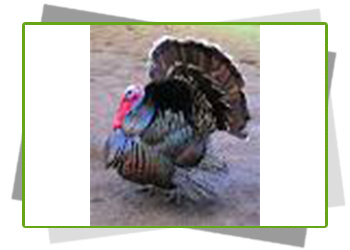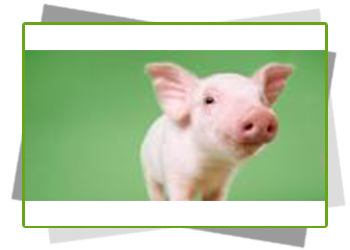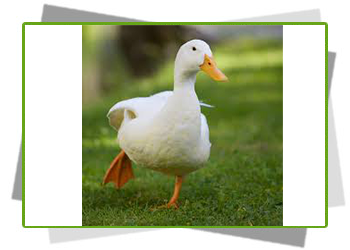| |
|
|
|
|
Farm Animals |
| |
|
|
|
|
|
|
| |
|
|
Farm Petting Zoo Animals
|
|
|
Turkey
The turkey is a large bird in the genus Meleagris, which is native to the Americas. One species, Meleagris gallopavo (commonly known as the wild turkey or domestic turkey), is native to the forests of North America, mainly Mexico and the United States. The other living species is Meleagris ocellata or the ocellated turkey, native to the forests of the Yucatán Peninsula. Males of both turkey species have a distinctive fleshy wattle or protuberance that hangs from the top of the beak (called a snood). They are among the largest birds in their ranges. As in many galliformes, the male is larger and much more colorful than the female. |
|
 |
|
Lamb
Sheep (Ovis aries) are quadrupedal, ruminant mammals typically kept as livestock. Like all ruminants, sheep are members of the order Artiodactyla, the even-toed ungulates. Although the name "sheep" applies to many species in the genus Ovis, in everyday usage it almost always refers to Ovis aries. Numbering a little over one billion, domestic sheep are also the most numerous species of sheep. An adult female sheep is referred to as a ewe, an intact male as a ram or occasionally a tup, a castrated male as a wether, and a younger sheep as a lamb. |
|
 |
|
Ewe
Sheep are most likely descended from the wild mouflon of Europe and Asia. One of the earliest animals to be domesticated for agricultural purposes, sheep are raised for fleece, meat (lamb, hogget or mutton) and milk. A sheep's wool is the most widely used animal fiber, and is usually harvested by shearing. Ovine meat is called lamb when from younger animals and mutton when from older ones. Sheep continue to be important for wool and meat today, and are also occasionally raised for pelts, as dairy animals, or as model organisms for science. |
|
 |
|
Calves
"Calf" is the term used from birth to weaning, when it becomes known as a weaner or weaner calf, though in some areas the term "calf" may be used until the animal is a yearling. The birth of a calf is known as calving. A calf that has lost its mother is an orphan calf, also known as a poddy or poddy-calf in British English. Bobby calves are young calves which are to be slaughtered for human consumption. A vealer is a fat calf weighing less than about 330 kg (730 lb) which is at about eight to nine months of age. A young female calf from birth until she has had a calf of her own is called a heifer |
|
 |
|
Llama
The height of a full-grown, full-size llama is 1.7 to 1.8 m (5.6 to 5.9 ft) tall at the top of the head, and can weigh between 130 and 200 kg (290 and 440 lb). At birth, a baby llama (called a cria) can weigh between 9 and 14 kg (20 and 31 lb). Llamas typically live for 15–25 years, with some individuals surviving 30 years or more.
They are very social animals and live with other llamas as a herd. The wool produced by a llama is very soft and lanolin-free. Llamas are intelligent and can learn simple tasks after a few repetitions. When using a pack, they can carry about 25% to 30% of their body weight for 8–13 km (5–8 miles) |
|
 |
|
Chickens
The chicken (Gallus gallus domesticus) is a domesticated fowl, a subspecies of the red junglefowl. As one of the most common and widespread domestic animals, with a population of more than 24 billion in 2003,[1] there are more chickens in the world than any other species of bird. Humans keep chickens primarily as a source of food, consuming both their meat and their eggs. |
|
 |
|
Piglets
The domestic pig (Sus scrofa domesticus or Sus domesticus), often called swine or hog, is a large, even-toed ungulate; it is variously considered a subspecies of the wild boar, or a distinct species. Its head-plus-body-length ranges from 0.9 to 1.8 m (35 to 71 in), and the adult can weigh between 50 to 350 kg (110 to 770 lb). Compared to other artiodactyls, its head is relatively long, pointed, and free of warts. Even-toed ungulates are generally herbivorous, but the domestic pig is an omnivore, like its wild relative. |
|
 |
|
Ducks
Duck is the common name for a large number of species in the Anatidae family of birds which also includes swans and geese. The ducks are divided among several subfamilies in the Anatidae family; they do not represent a monophyletic group (the group of all descendants of a single common ancestral species) but a form taxon, since swans and geese are not considered ducks. Ducks are mostly aquatic birds, mostly smaller than the swans and geese, and may be found in both fresh water and sea water. |
|
 |
|
Rabbits
Rabbits are small mammals in the family Leporidae of the order Lagomorpha, found in several parts of the world. There are eight different genera in the family classified as rabbits, including the European rabbit (Oryctolagus cuniculus), cottontail rabbits (genus Sylvilagus; 13 species), and the Amami rabbit (Pentalagus furnessi, an endangered species on Amami Oshima, Japan). There are many other species of rabbit, and these, along with pikas and hares, make up the order Lagomorpha. The male is called a buck and the female is a doe; a young rabbit is a kitten or kit. |
|
 |
|
|
| |
|
|
|
|
|
|
|
|
|
|
|
|
|
|